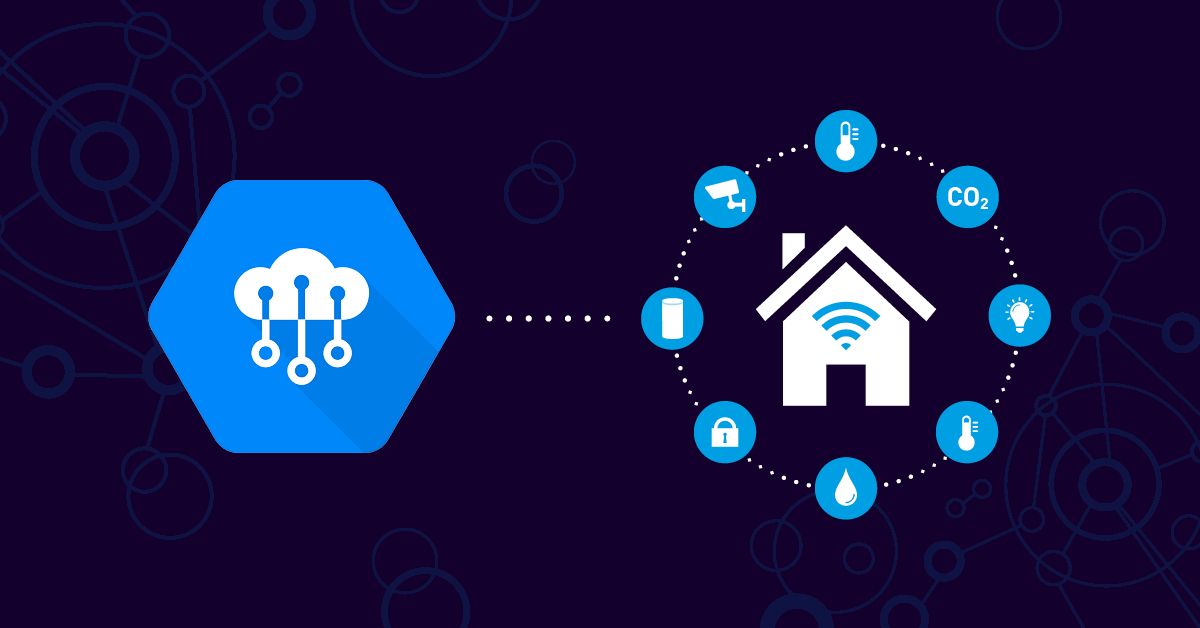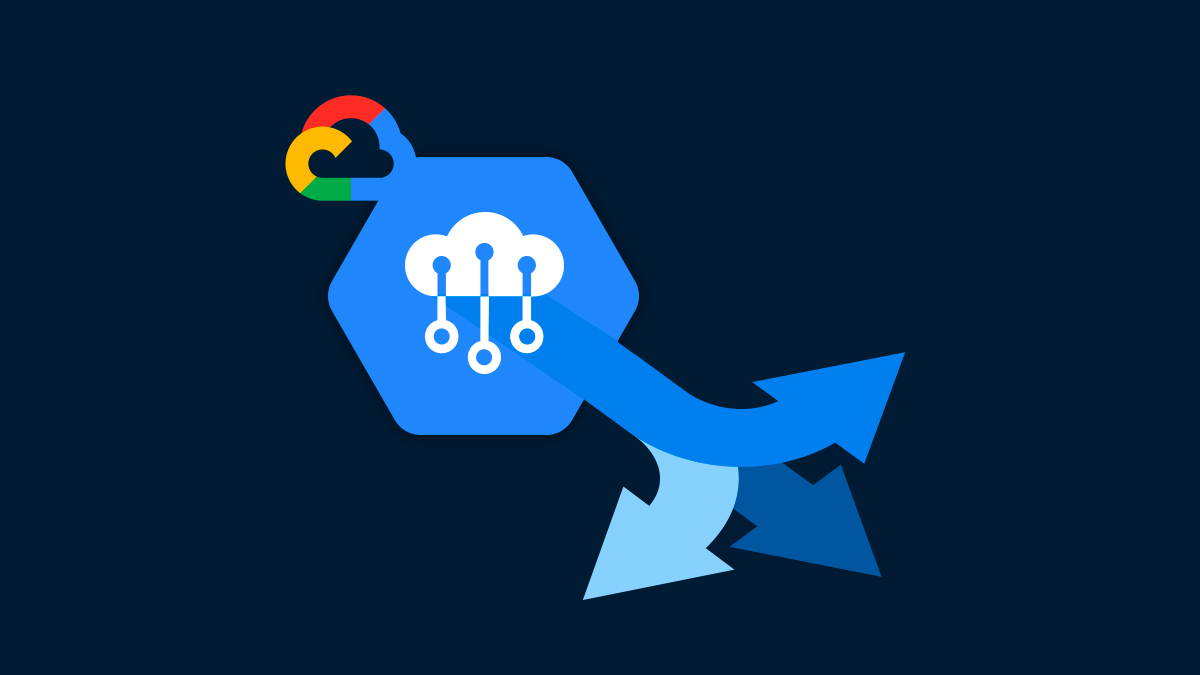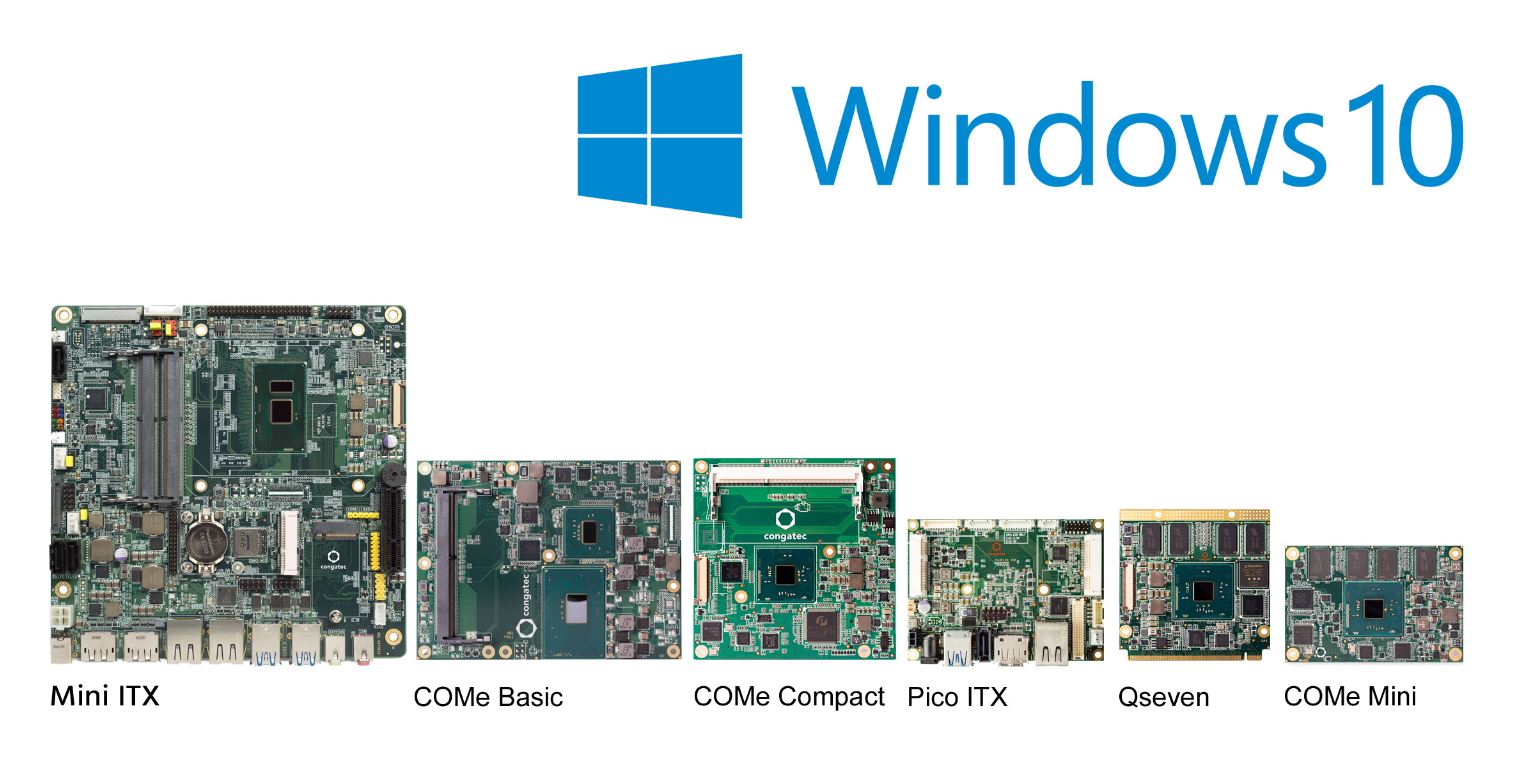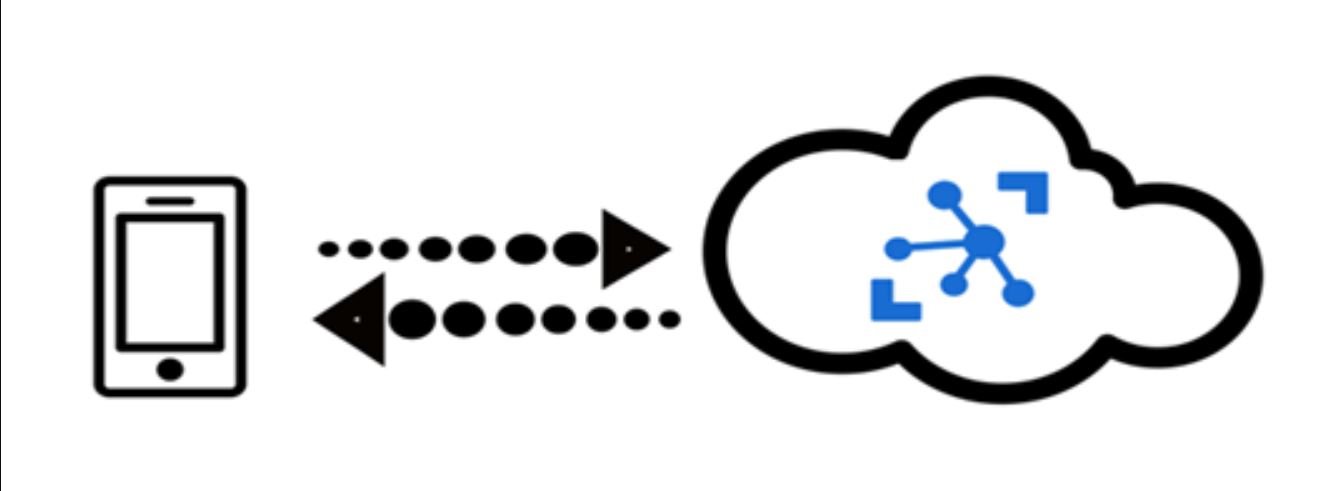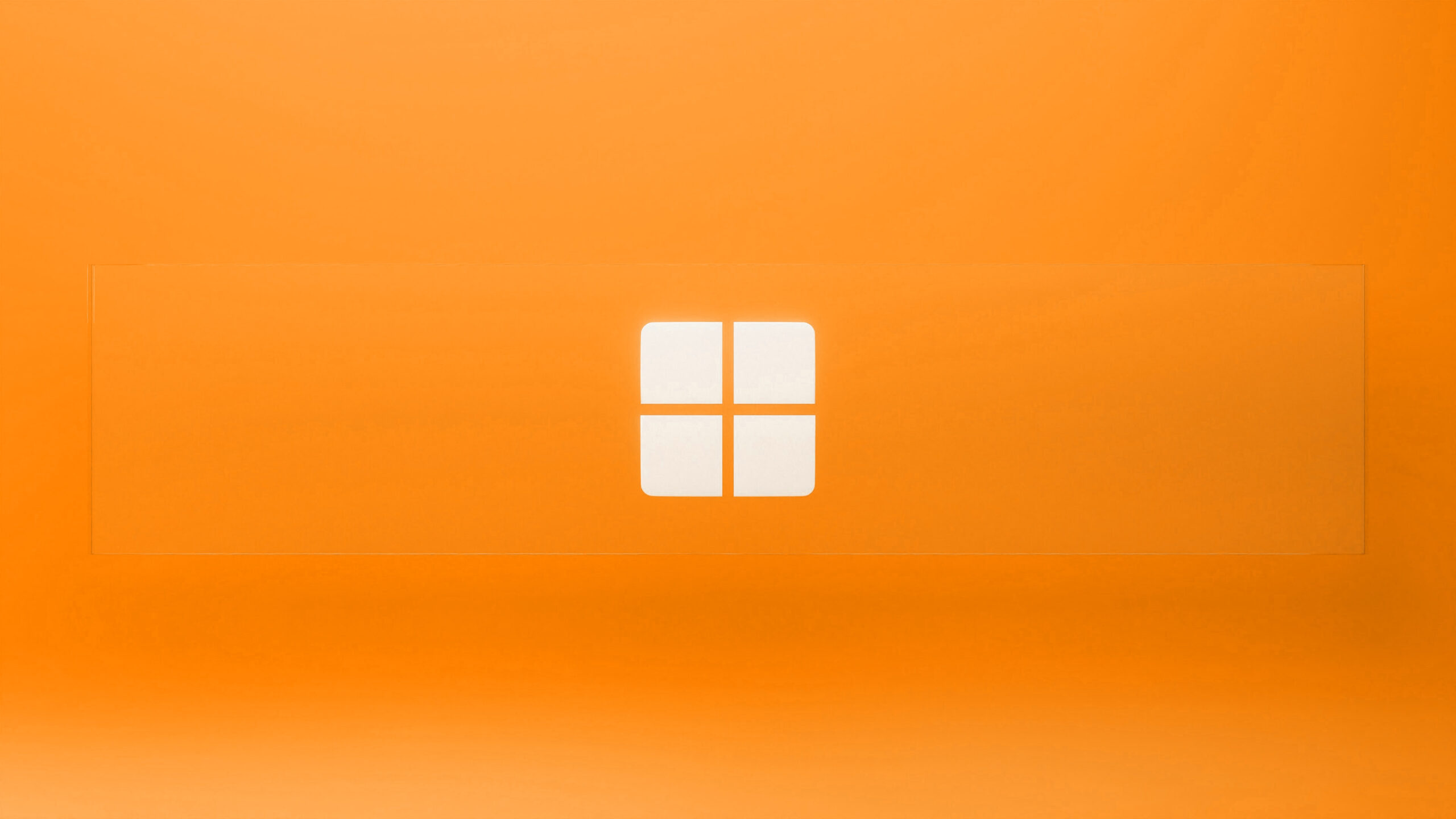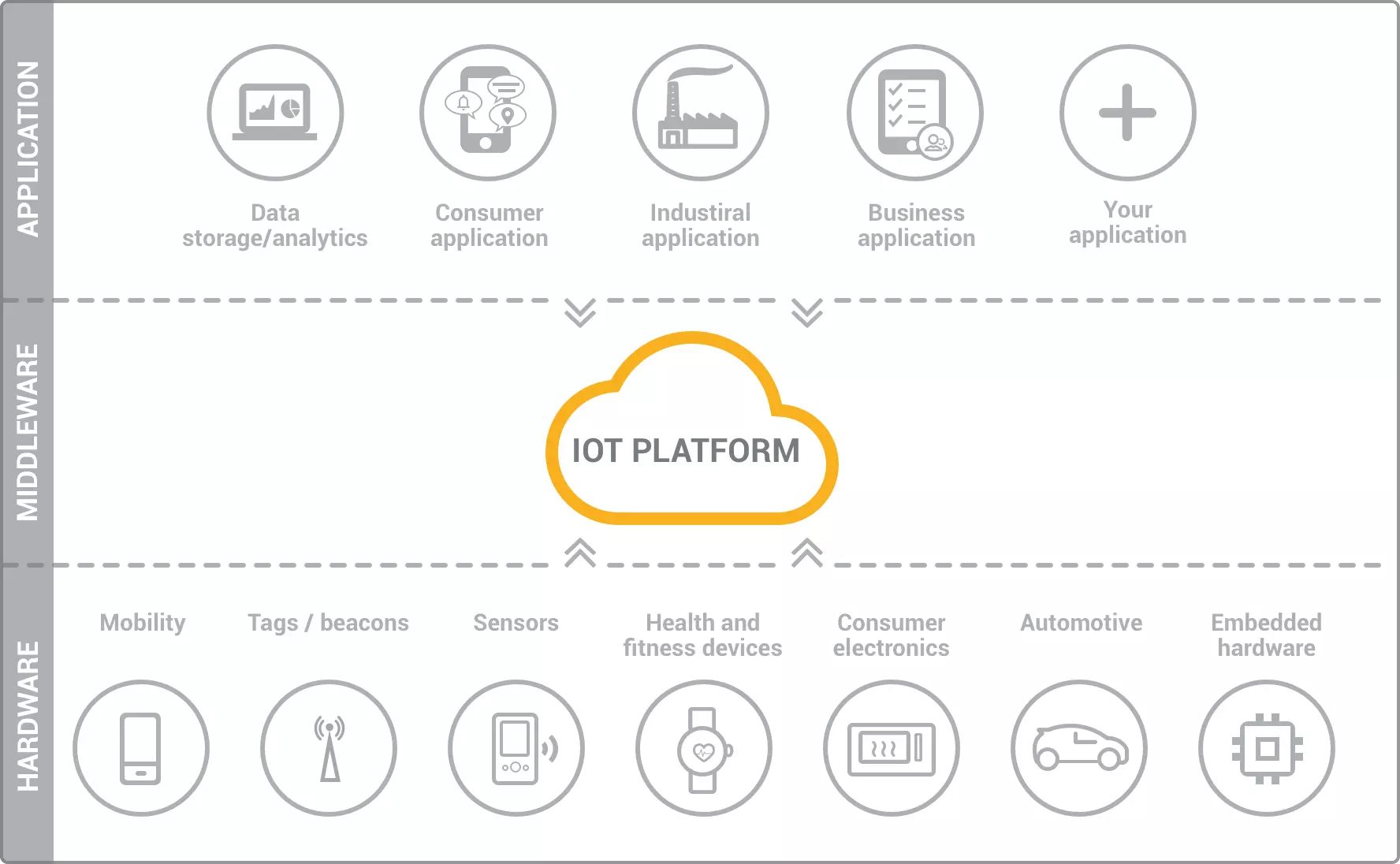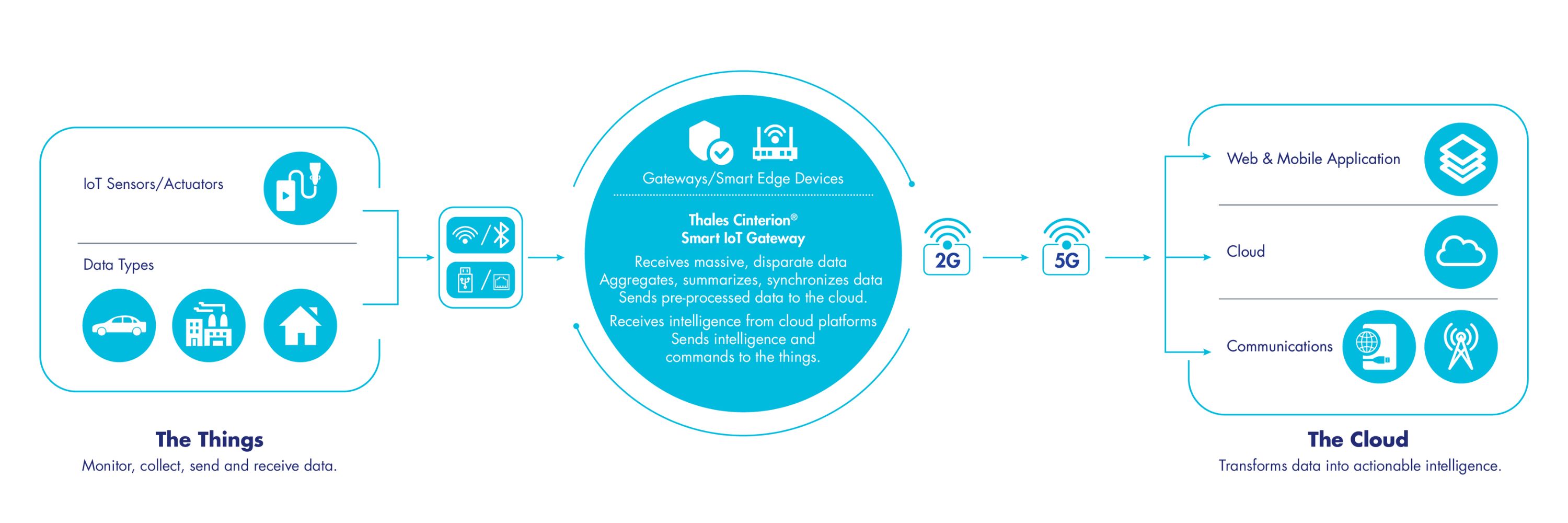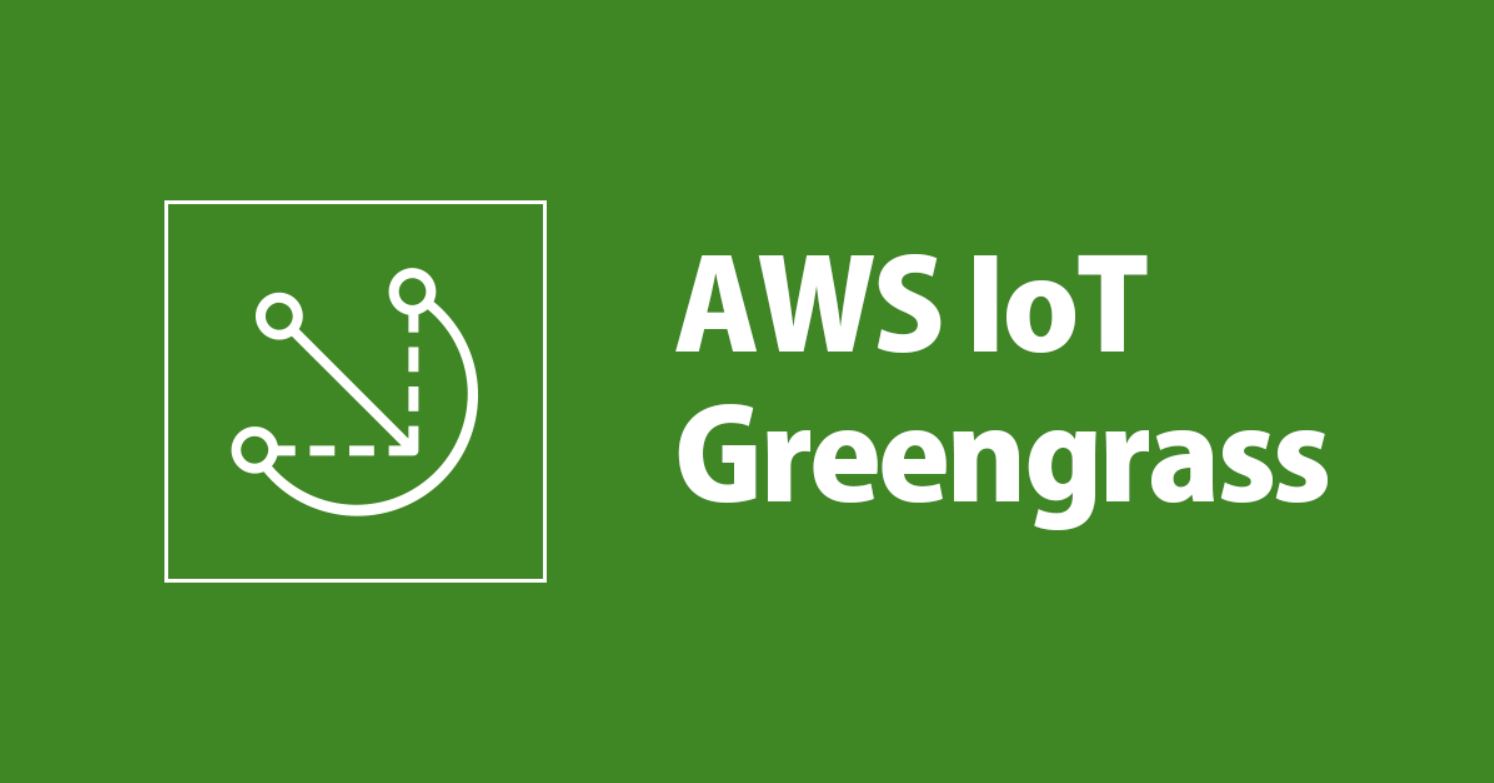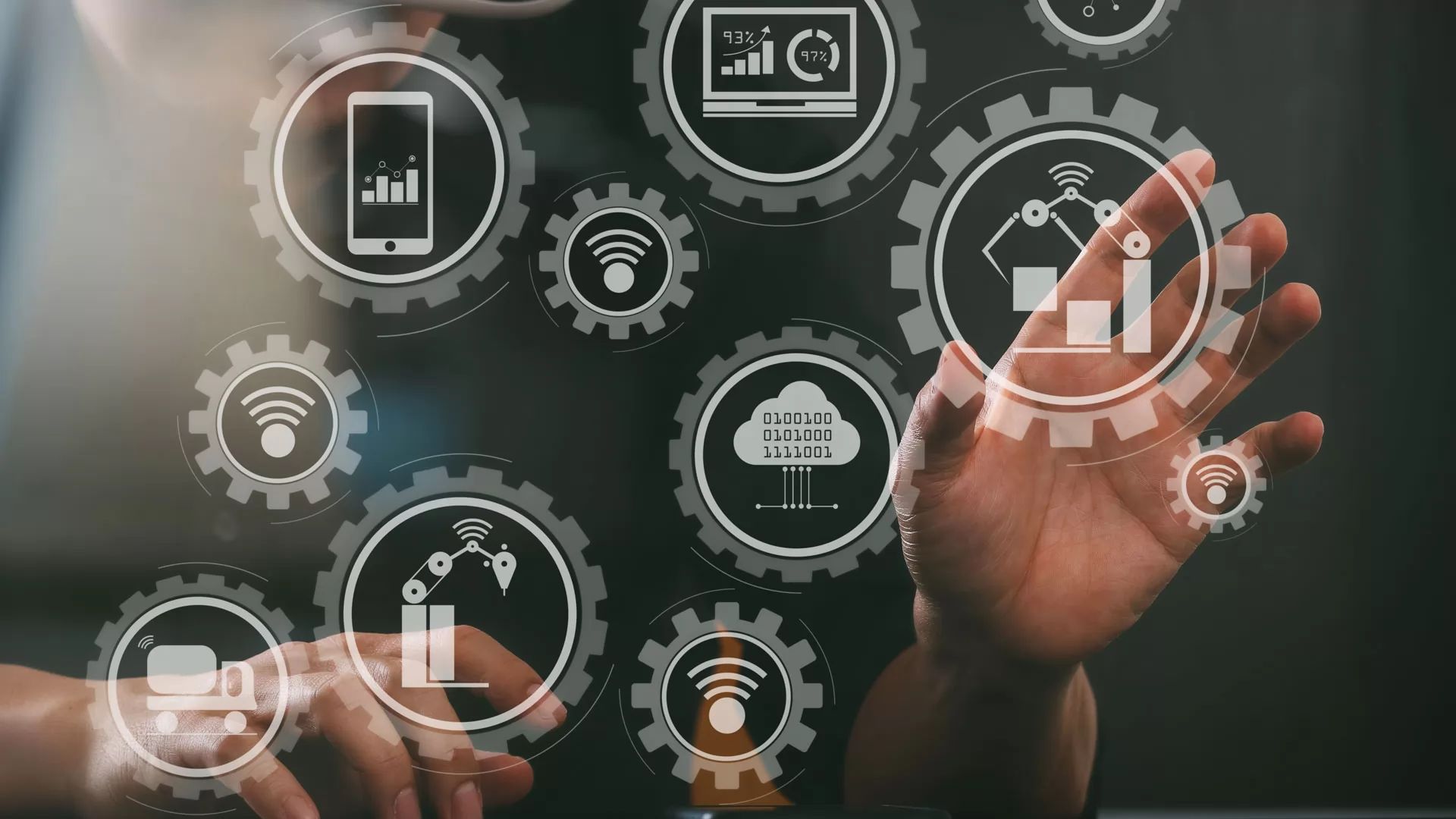Introduction
Welcome to the world of IoT (Internet of Things), where devices, sensors, and machines are interconnected to communicate and share data. The rapid growth of IoT has opened up numerous possibilities across industries, from smart home automation to industrial monitoring and healthcare applications. As the number of connected devices continues to increase, managing and orchestrating these devices becomes a critical task.
This is where Cloud IoT Core comes into play. Cloud IoT Core is a fully managed service offered by Google Cloud that enables you to connect, manage, and secure your IoT devices at scale. It provides a reliable and secure infrastructure for IoT deployments, allowing you to focus on building innovative applications and extracting actionable insights from your IoT data.
With Cloud IoT Core, you can easily integrate your devices, collect real-time data, and enable bi-directional communication between devices and the cloud. Whether you’re dealing with a handful of devices or millions, Cloud IoT Core can handle the scalability requirements of your IoT projects.
But how exactly does Cloud IoT Core work? What are its key features, and what benefits does it offer? In this article, we will explore the answers to these questions and discuss some exciting use cases for Cloud IoT Core.
Are you ready to delve into the world of Cloud IoT Core? Let’s get started.
What is Cloud IoT Core?
Cloud IoT Core is a robust and scalable platform that allows you to connect, manage, and ingest data from IoT devices securely. It serves as a bridge between your IoT devices and the cloud, facilitating real-time communication and data exchange.
At its core, Cloud IoT Core provides a strong foundation for building IoT solutions by offering reliable device connectivity, efficient data ingestion, and secure device management. It acts as a middleware that simplifies the complexities associated with managing large-scale IoT deployments.
With Cloud IoT Core, you can easily register and authenticate your devices, as well as securely transmit data to and from the cloud. It supports multiple protocols, including MQTT (Message Queuing Telemetry Transport) and HTTP (Hypertext Transfer Protocol), allowing seamless integration with a wide range of IoT devices.
The platform leverages Google’s Cloud infrastructure and advanced security mechanisms to ensure the privacy and integrity of your IoT data. It offers end-to-end encryption, rigorous access control, and authentication mechanisms, providing a trusted environment for your IoT solutions.
Cloud IoT Core also enables the efficient processing and analysis of IoT data by seamlessly integrating with other Google Cloud services. You can leverage the power of Google’s data analytics and machine learning tools, such as Cloud Pub/Sub, Cloud Dataflow, and BigQuery, to extract valuable insights and drive meaningful actions from your IoT data.
Overall, Cloud IoT Core empowers businesses and developers to build scalable and secure IoT solutions with ease. It takes care of the underlying complexities, allowing you to focus on adding value to your IoT applications and delivering exceptional user experiences.
How does it work?
Cloud IoT Core follows a straightforward and efficient workflow to enable seamless communication and data management between IoT devices and the cloud.
1. Device registration: The first step is to register your IoT devices with Cloud IoT Core. Each device is assigned a unique device ID and authentication key, ensuring secure and authorized access to the platform.
2. Device authentication and authorization: Once registered, devices authenticate themselves using the assigned key during the connection process. Cloud IoT Core verifies the authenticity of the device and authorizes it to communicate within the defined security policies.
3. Device data transmission: The registered devices can now start transmitting data to Cloud IoT Core. They can send data in various formats, including JSON or binary payloads, depending on the device’s capabilities and requirements. Cloud IoT Core supports both one-way and two-way communication, enabling devices to receive commands or configuration updates from the cloud.
4. Data ingestion and processing: Cloud IoT Core receives and ingests the data sent by the devices. It handles the high throughput and scalability requirements of IoT deployments, ensuring real-time data processing and efficient storage. The platform seamlessly integrates with other Google Cloud services, enabling you to process the data using advanced analytics and machine learning tools.
5. Data analytics and insights: Once the data is ingested into Cloud IoT Core, you can leverage the power of Google Cloud’s analytics and machine learning services to extract valuable insights. Through services like Cloud Pub/Sub, Cloud Dataflow, and BigQuery, you can analyze the data, uncover patterns, and gain actionable insights to make data-driven decisions.
6. Application integration: Cloud IoT Core allows you to integrate your IoT data into custom applications or existing enterprise solutions. You can leverage APIs and SDKs to build real-time dashboards, trigger automated actions, or integrate the data into other business systems.
By following this workflow, Cloud IoT Core seamlessly manages the communication, data ingestion, and processing aspects of your IoT deployments, providing a reliable and scalable infrastructure for your IoT solutions.
Key features of Cloud IoT Core
Cloud IoT Core offers a range of powerful features that make it an ideal platform for managing, securing, and extracting insights from your IoT devices and data. Let’s explore some of its key features:
1. Secure Device Connectivity: Cloud IoT Core ensures secure and reliable connectivity for your IoT devices. It supports standard IoT protocols like MQTT and HTTP, allowing devices to securely transmit data to and receive commands from the cloud. Device authentication and authorization mechanisms provide an additional layer of security.
2. Device Management: With Cloud IoT Core, you can easily manage your fleet of IoT devices at scale. The platform provides device registration, authentication, and configuration management capabilities. You can remotely update device firmware, define device groups and permissions, and easily monitor and track device health and status.
3. Scalability and Performance: Cloud IoT Core is designed to handle massive IoT deployments with millions of devices. The platform benefits from Google’s highly scalable infrastructure, ensuring real-time data ingestion, processing, and analytics at scale. It can seamlessly scale up or down based on the needs of your IoT projects.
4. Integration with Google Cloud Services: Cloud IoT Core integrates seamlessly with other Google Cloud services, allowing you to leverage the entire ecosystem for your IoT solutions. You can easily stream data to Cloud Pub/Sub for real-time messaging, use Cloud Dataflow for large-scale data processing, and store and query the data in BigQuery for advanced analytics.
5. End-to-End Security: Security is a top priority with Cloud IoT Core. It offers end-to-end encryption for data transmission, ensuring the privacy and integrity of your IoT data. You can define granular access control policies, implement device-level authentication and authorization, and benefit from Google’s advanced security infrastructure to protect your IoT deployments.
6. Data Analytics and Insights: Cloud IoT Core enables you to derive meaningful insights from your IoT data. You can leverage Google Cloud’s data analytics and machine learning tools to gain insights, detect anomalies, and build predictive models. This allows you to make data-driven decisions and optimize efficiency in your IoT applications.
These are just a few of the many powerful features of Cloud IoT Core. The platform provides a comprehensive set of tools and capabilities that make it easier to manage and extract value from your IoT deployments.
Benefits of using Cloud IoT Core
Using Cloud IoT Core offers numerous benefits that can greatly enhance your IoT deployments and enable you to make the most of your connected devices and data. Let’s explore some of the key benefits of using Cloud IoT Core:
1. Simplified IoT Device Management: Cloud IoT Core provides a centralized platform for managing your IoT devices at scale. It offers device registration, authentication, and configuration management capabilities, making it easier to onboard and manage a large number of devices. You can remotely update device firmware, monitor device health, and track device status, simplifying routine device management tasks.
2. Scalability and Flexibility: Cloud IoT Core is built on Google’s scalable infrastructure, allowing it to handle IoT deployments of any size. Whether you have a few devices or millions of them, Cloud IoT Core can scale effortlessly to accommodate your needs. This scalability provides flexibility and ensures that your IoT solution remains responsive and available, even as your device fleet grows.
3. Enhanced Security and Privacy: Security is of utmost importance when dealing with IoT devices and data. Cloud IoT Core offers robust security measures to protect your IoT deployments. It provides end-to-end encryption for data transmission, ensuring that your IoT data is confidential and secure. Additionally, it supports device-level authentication and fine-grained access control, allowing you to define who can access your devices and data.
4. Seamless Integration with Google Cloud Services: With Cloud IoT Core, you can leverage the power of the Google Cloud ecosystem. It integrates seamlessly with other Google Cloud services, such as Cloud Pub/Sub, Cloud Dataflow, and BigQuery. This integration enables you to leverage advanced data analytics, machine learning, and storage capabilities to derive valuable insights and unlock the full potential of your IoT data.
5. Real-time Data Processing and Analytics: Cloud IoT Core enables real-time data processing and analytics. It allows you to ingest data from your IoT devices in real-time and process it using cloud-based analytics tools. With the ability to analyze data as it arrives, you can quickly identify patterns, detect anomalies, and trigger timely actions based on the insights gained from your IoT data.
6. Cost Efficiency: Cloud IoT Core follows a pay-as-you-go pricing model, allowing you to pay only for the resources you use. This cost-efficient approach eliminates the need for upfront investments in hardware infrastructure and provides flexibility in scaling your IoT deployments. Additionally, you can optimize costs by leveraging the scalability and efficiency of the Google Cloud infrastructure.
The benefits of using Cloud IoT Core extend beyond these points and can have a significant impact on the success of your IoT projects. By leveraging the features and capabilities of Cloud IoT Core, you can streamline device management, enhance security, gain valuable insights, and accelerate innovation in your IoT applications.
Use cases for Cloud IoT Core
Cloud IoT Core offers a versatile platform that can be applied to a wide range of industries and use cases. Let’s explore some of the common use cases where Cloud IoT Core can be leveraged:
1. Industrial Monitoring and Automation: Cloud IoT Core can be used to monitor and manage industrial equipment and processes. By connecting sensors and devices to the platform, businesses can collect real-time data to optimize operations, track performance, and proactively identify maintenance needs. This enables predictive maintenance, reduces downtime, and improves overall efficiency in industries such as manufacturing, oil and gas, and logistics.
2. Smart Buildings and Facilities Management: Cloud IoT Core enables smart building solutions by connecting various IoT devices, including sensors, thermostats, and lighting systems. By collecting and analyzing data from these devices, building owners and facility managers can optimize energy consumption, improve occupant comfort, and ensure the efficient operation of critical building systems. Cloud IoT Core also facilitates remote monitoring and control of devices, providing real-time insights and enhancing overall building management.
3. Agriculture and Farming: In the agriculture sector, Cloud IoT Core can help monitor and optimize crop growth, irrigation systems, and livestock management. By integrating IoT devices such as soil moisture sensors, weather stations, and livestock trackers, farmers can make data-driven decisions to enhance crop yield, reduce water waste, and improve animal welfare. Real-time monitoring and analysis provided by Cloud IoT Core can help farmers adapt to changing conditions, prevent disease outbreaks, and optimize resource allocation.
4. Healthcare and Remote Patient Monitoring: Cloud IoT Core enables remote patient monitoring by connecting medical devices, wearables, and healthcare equipment to the cloud. This allows healthcare providers to collect and analyze patient data in real-time, track vital signs, and receive alerts or notifications when critical thresholds are exceeded. Cloud IoT Core also supports secure data transmission, ensuring patient privacy and compliance with healthcare regulations.
5. Retail and Inventory Management: Cloud IoT Core can enhance inventory management and supply chain operations in the retail industry. By tagging products with IoT devices or sensors, retailers can track inventory levels in real-time, monitor the movement of goods, and optimize stock replenishment. The platform provides insights into customer demand patterns, enabling retailers to make informed decisions about product placement, pricing strategies, and inventory optimization.
6. Environmental Monitoring and Sustainability: Cloud IoT Core can play a crucial role in environmental monitoring and sustainability initiatives. By deploying IoT devices to measure air quality, water quality, or energy consumption, organizations can collect and analyze data to identify pollution sources, detect anomalies, and implement measures to minimize environmental impact. Cloud IoT Core enables real-time monitoring and analysis, providing valuable insights to drive sustainable practices and ensure compliance with environmental regulations.
These are just a few examples of the many use cases where Cloud IoT Core can be applied. The platform’s flexibility, scalability, and integration capabilities make it a versatile solution for businesses across various industries striving to harness the power of IoT to drive innovation and improve operational efficiency.
Getting started with Cloud IoT Core
If you’re ready to explore the possibilities of Cloud IoT Core and kickstart your IoT projects, here are some steps to help you get started:
1. Set up a Google Cloud account: To begin using Cloud IoT Core, you’ll need a Google Cloud account. Sign up for an account if you don’t have one already. You may also need to enable the necessary APIs and services for Cloud IoT Core within your account.
2. Create an IoT project: Once you have your Google Cloud account set up, create a new project specifically for your IoT applications. This project will act as a container for all the resources and configurations related to your IoT deployments.
3. Configure device registries: Device registries are used to manage and organize your IoT devices within Cloud IoT Core. Create a device registry tailored to your project requirements, specifying important parameters such as device metadata, authentication mechanisms, and access control policies.
4. Register your IoT devices: With your device registry in place, you can now start registering your IoT devices with Cloud IoT Core. Each device will have a unique device ID and authentication key or certificate. Registering your devices allows them to securely connect to Cloud IoT Core and start transmitting data.
5. Establish device connectivity: Configure your IoT devices to establish connectivity with Cloud IoT Core. Devices should be able to communicate over standard IoT protocols such as MQTT or HTTP. Set up the appropriate communication libraries or SDKs on your devices to enable secure and reliable data transmission.
6. Ingest and process IoT data: Cloud IoT Core provides various methods to ingest and process the data received from your IoT devices. You can leverage Google Cloud Pub/Sub for real-time messaging and data streaming. Use additional Google Cloud services like Dataflow and BigQuery for advanced data processing and analytics.
7. Implement device management: Cloud IoT Core simplifies device management by providing features such as remote device configuration and firmware updates. Utilize the device management capabilities to remotely manage and monitor your IoT devices, ensuring they are always up-to-date and operating optimally.
8. Monitor and analyze IoT data: Once your devices are connected and transmitting data, leverage the analytics and visualization tools provided by Google Cloud to monitor and analyze your IoT data. Create real-time dashboards and implement alerting mechanisms to respond quickly to critical events or anomalies detected in your IoT deployments.
By following these steps, you can quickly get started with Cloud IoT Core and unlock the full potential of your IoT projects. Remember to refer to the official Google Cloud documentation for detailed instructions and best practices to ensure a successful implementation.
Conclusion
Cloud IoT Core provides a robust and scalable platform for connecting, managing, and securing your IoT devices and data. With its comprehensive suite of features and seamless integration with Google Cloud services, Cloud IoT Core empowers businesses to harness the power of IoT and drive innovation across various industries.
By leveraging Cloud IoT Core, businesses can streamline device management, enhance security, gain valuable insights, and optimize operations. The platform’s scalability, flexibility, and real-time data processing capabilities make it an ideal choice for IoT deployments of any size and complexity.
Whether you’re monitoring industrial processes, managing smart buildings, optimizing agriculture operations, or driving sustainability initiatives, Cloud IoT Core offers the tools and flexibility to meet your IoT needs. From device registration and authentication to efficient data ingestion and analytics, Cloud IoT Core simplifies the complexities of IoT deployments, allowing you to focus on building innovative applications and extracting actionable insights from your IoT data.
To get started with Cloud IoT Core, create a Google Cloud account, set up an IoT project, configure device registries, and register your IoT devices. Leverage the platform’s features for secure device connectivity, robust device management, and seamless integration with other Google Cloud services. Monitor and analyze your IoT data to gain valuable insights and optimize operations.
In conclusion, Cloud IoT Core empowers businesses to unlock the full potential of their IoT deployments and drive digital transformation. By securely connecting and managing IoT devices, processing real-time data, and leveraging the power of Google Cloud’s analytics and machine learning tools, organizations can make data-driven decisions, improve efficiency, and deliver exceptional user experiences in the rapidly evolving world of IoT.







